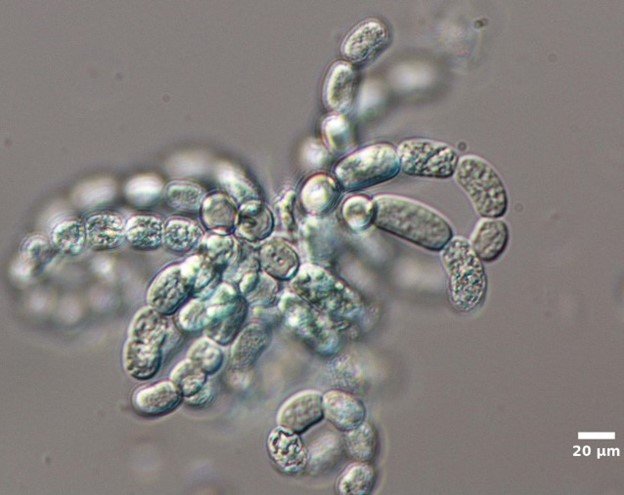Indicators: Phytoplankton
What are phytoplankton?
Phytoplankton are free-floating, microalgae, composed of two major groups – cyanobacteria (or blue-green algae) and single-celled algae, mainly diatoms and dinoflagellates. Phytoplankton inhabit the sunlit, upper layer of most freshwater and marine environments. These microscopic organisms contain chlorophyll that helps them absorb energy from the sun. The phytoplankton use light energy and carbon dioxide from the air to make food (carbohydrates) for themselves through photosynthesis, releasing oxygen in the process.
Why are phytoplankton Important?
Phytoplankton are primary producers in the food chain, and serve as food (organic matter) directly or indirectly for many animals - zooplankton, invertebrates, and small fish feed on the phytoplankton, and then those small animals are eaten by larger ones. Phytoplankton are major producers of oxygen in marine and freshwaters, and also our atmosphere, producing at least half of the Earth’s oxygen via phytoplankton photosynthesis. By consuming carbon dioxide from the air during photosynthesis, phytoplankton also play a key role in the carbon cycle, helping to control the amount of carbon dioxide in the atmosphere and regulate the global temperature and climate.

Why are phytoplankton good indicators of aquatic health?
There are thousands of species of phytoplankton, and each species has a set of environmental conditions in which it thrives. Changes in environmental conditions related to habitat, nutrients, water depth and chemistry, such as pH, temperature, and salinity, can affect the community structure and diversity of the phytoplankton. Under certain conditions, often when nutrient concentrations are high, certain species of cyanobacteria, dinoflagellates, and diatoms can grow to extreme numbers and form blooms. Some blooms can be harmful by depleting oxygen in the water and/or producing toxins (poisons) that can lead to mortality of fish, shellfish, birds, and mammals including humans. Phytoplankton biomass, species abundance and diversity are essential indicators for predicting where and when harmful algal blooms (HABs) are likely to form, and for assessing the impacts of pollution (e.g., industrial wastewater and agricultural runoff) on water quality and ecosystem health.
How is this indicator used in NARS?
The National Lakes Assessment collects phytoplankton data which is available on the NARS data page for these surveys.
| NLA | NRSA | NCCA | NWCA | Indicator Type |
|---|---|---|---|---|
| X | Core Indicator | |||
| Research Indicator |
